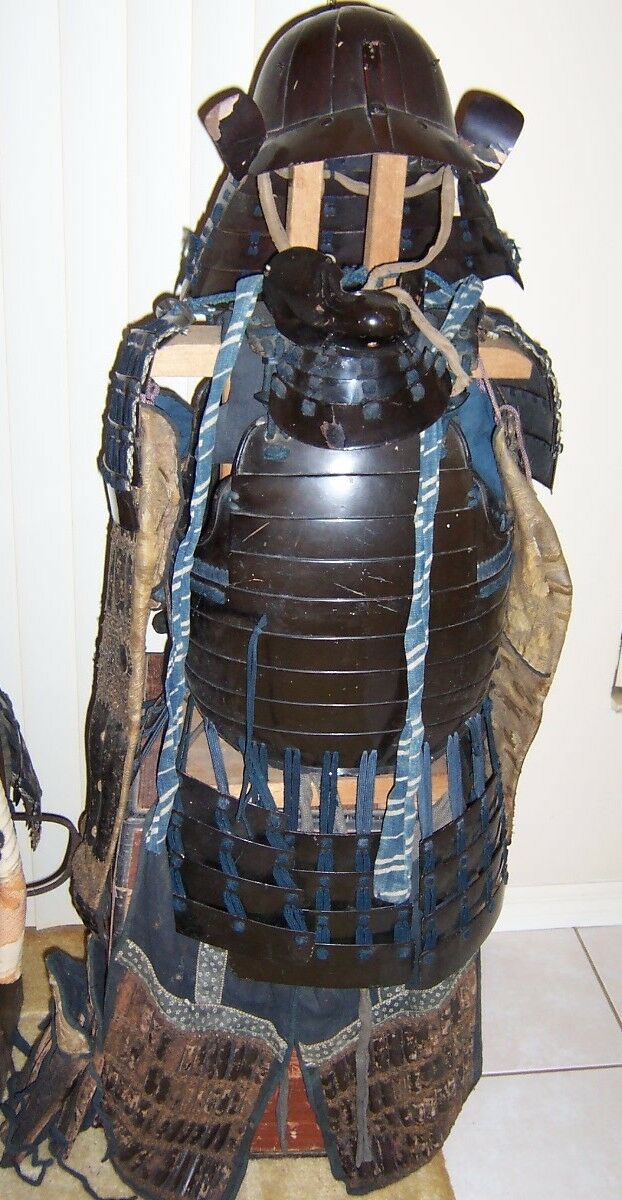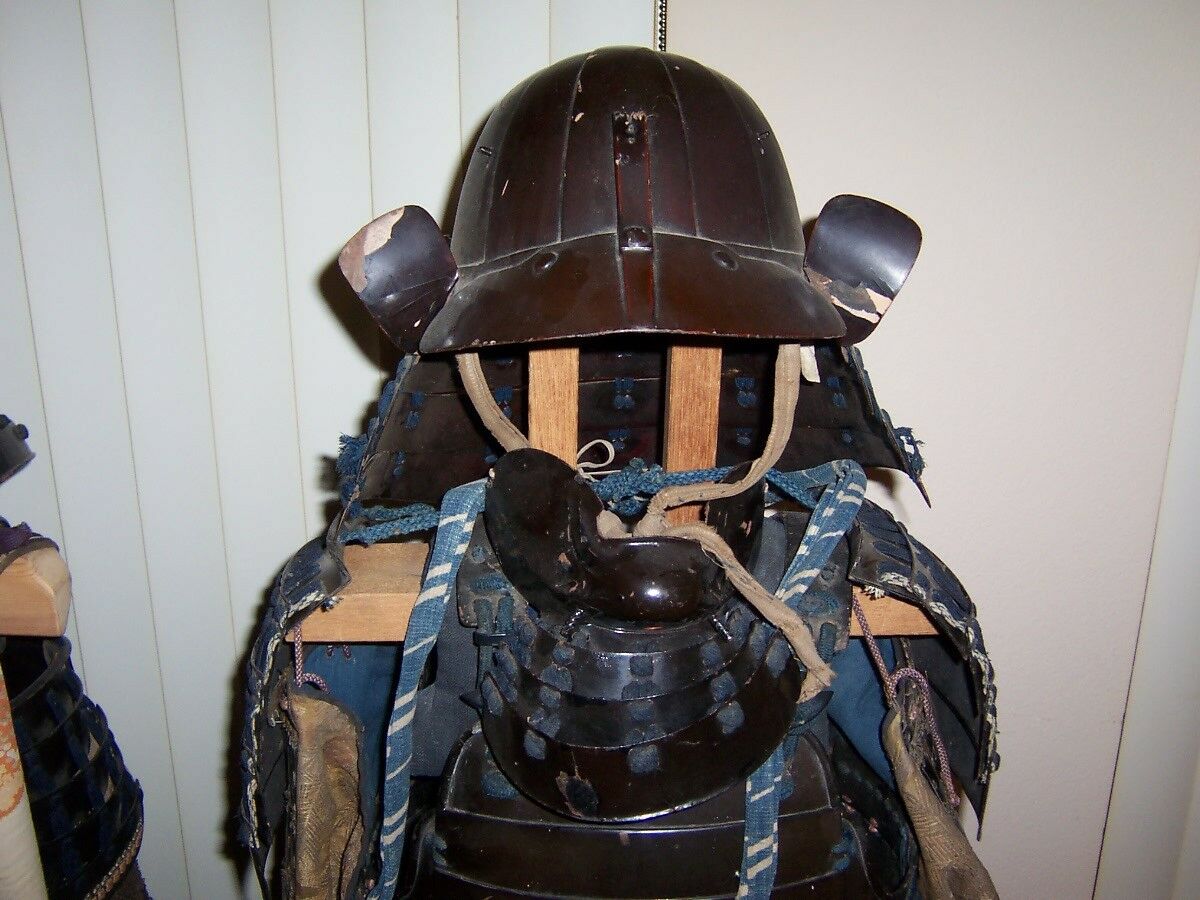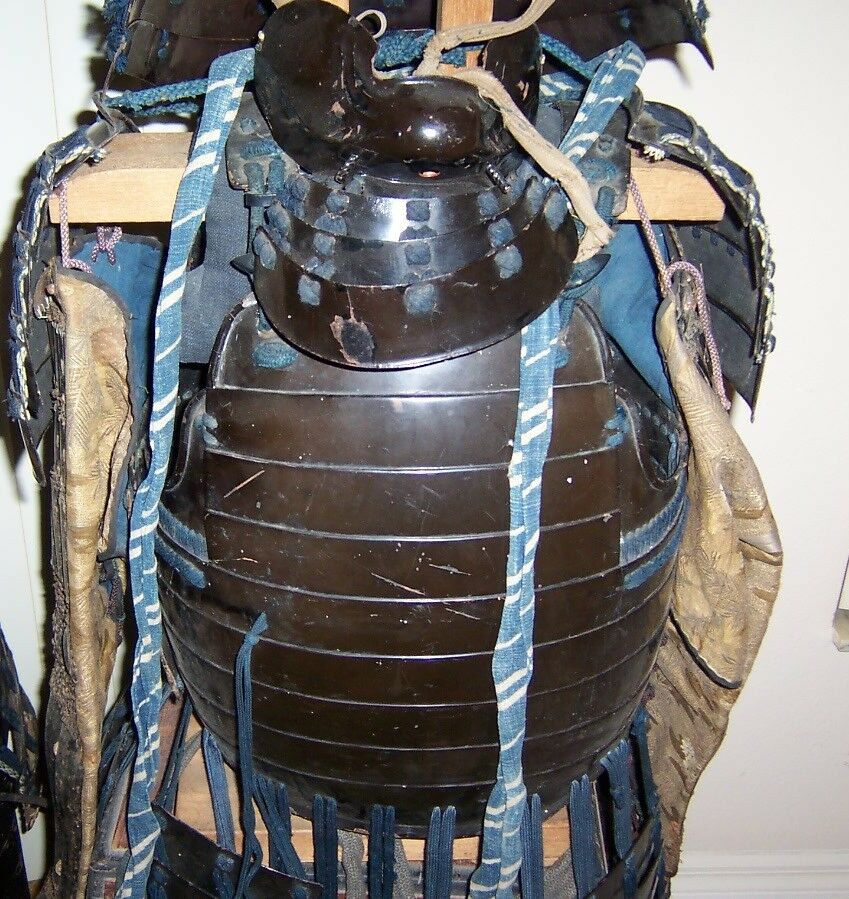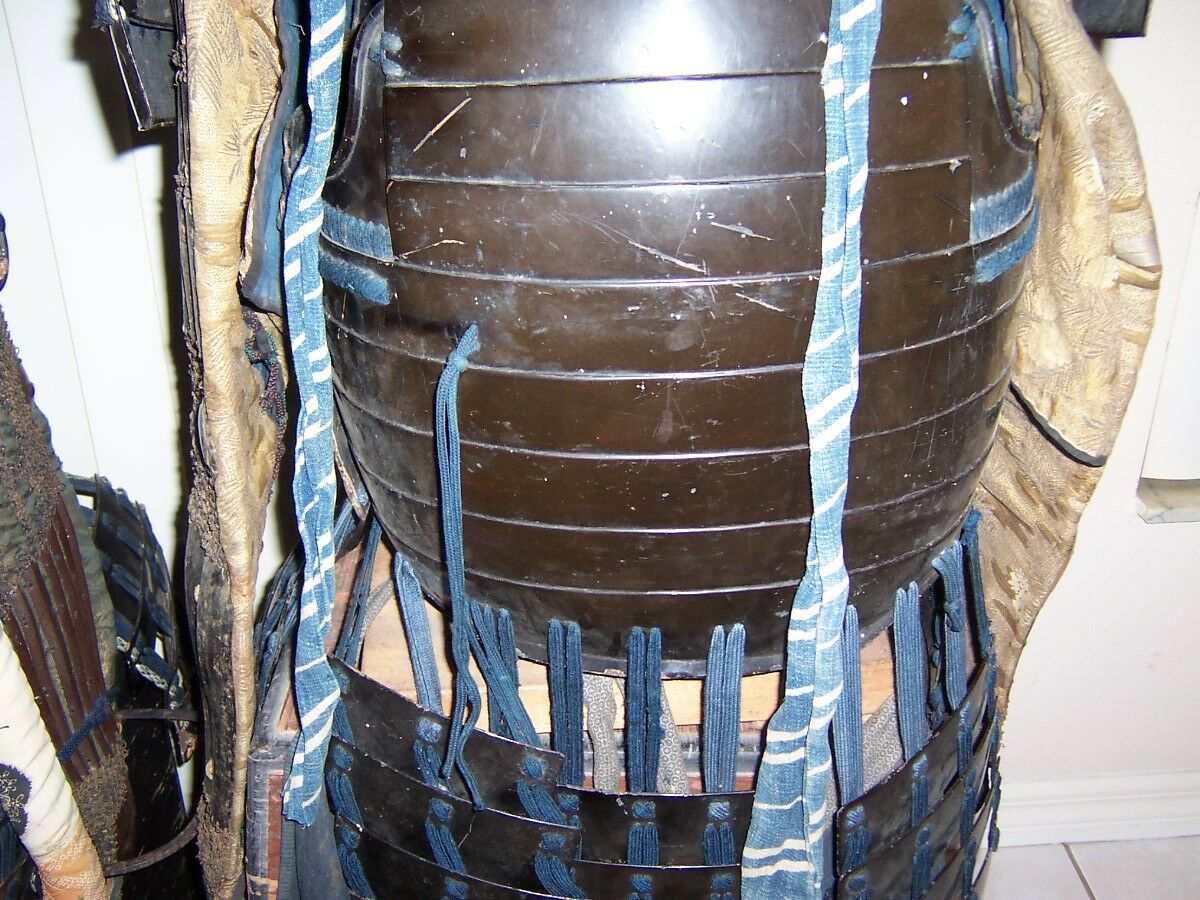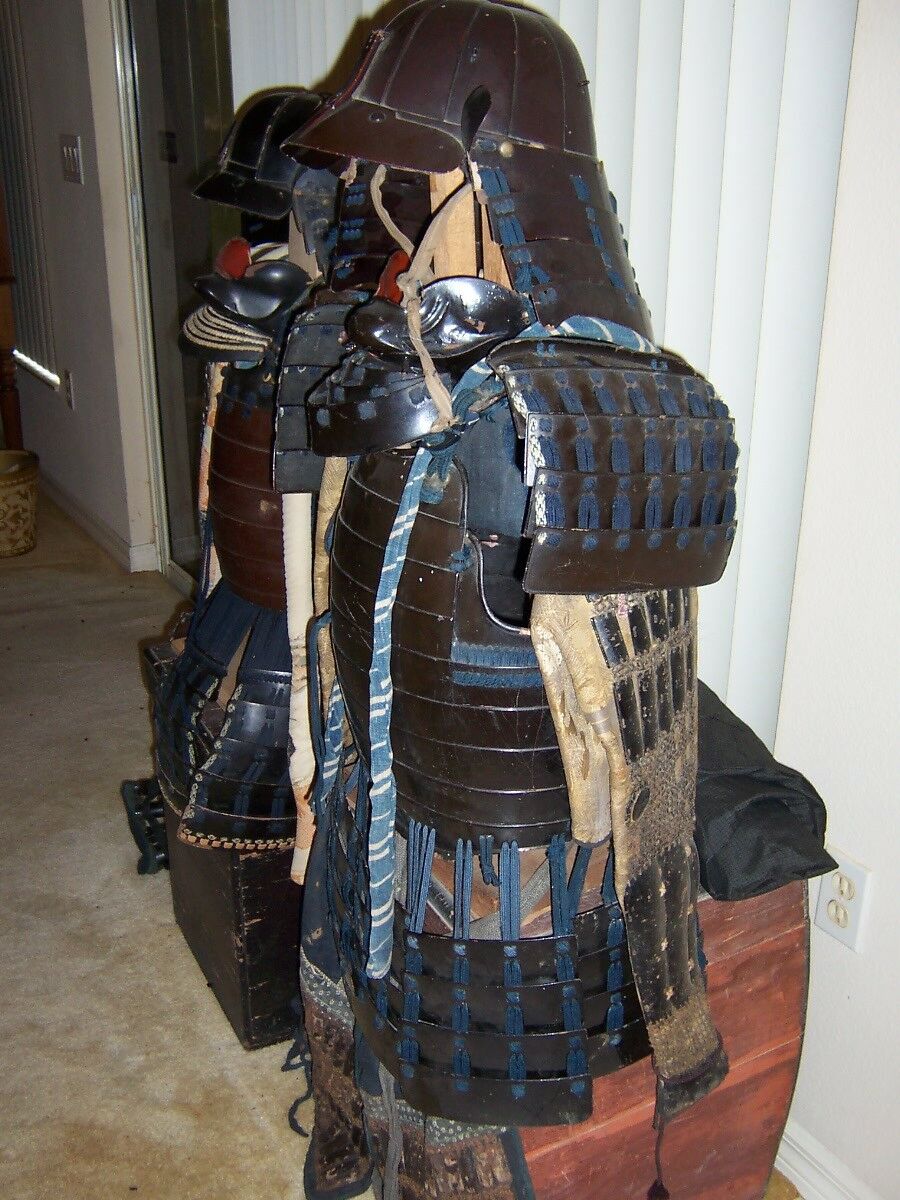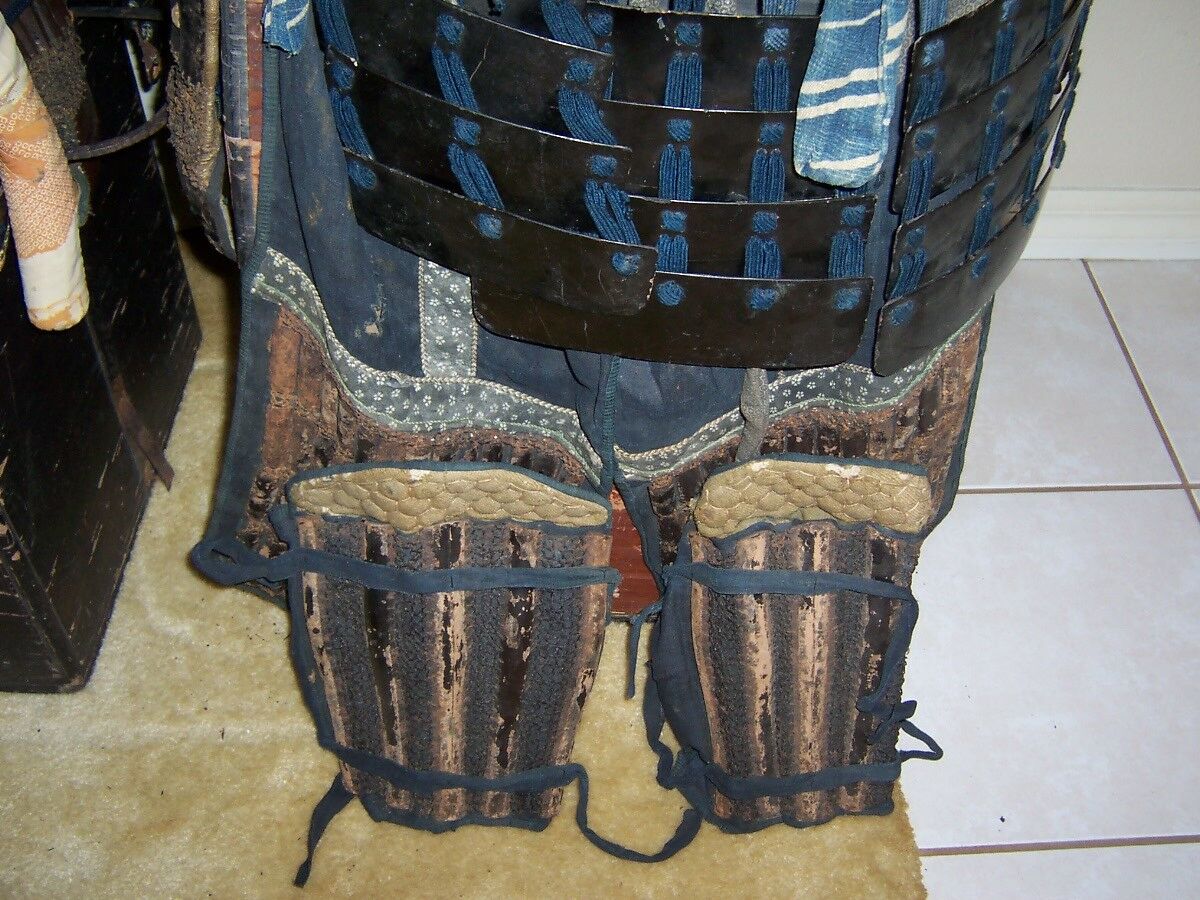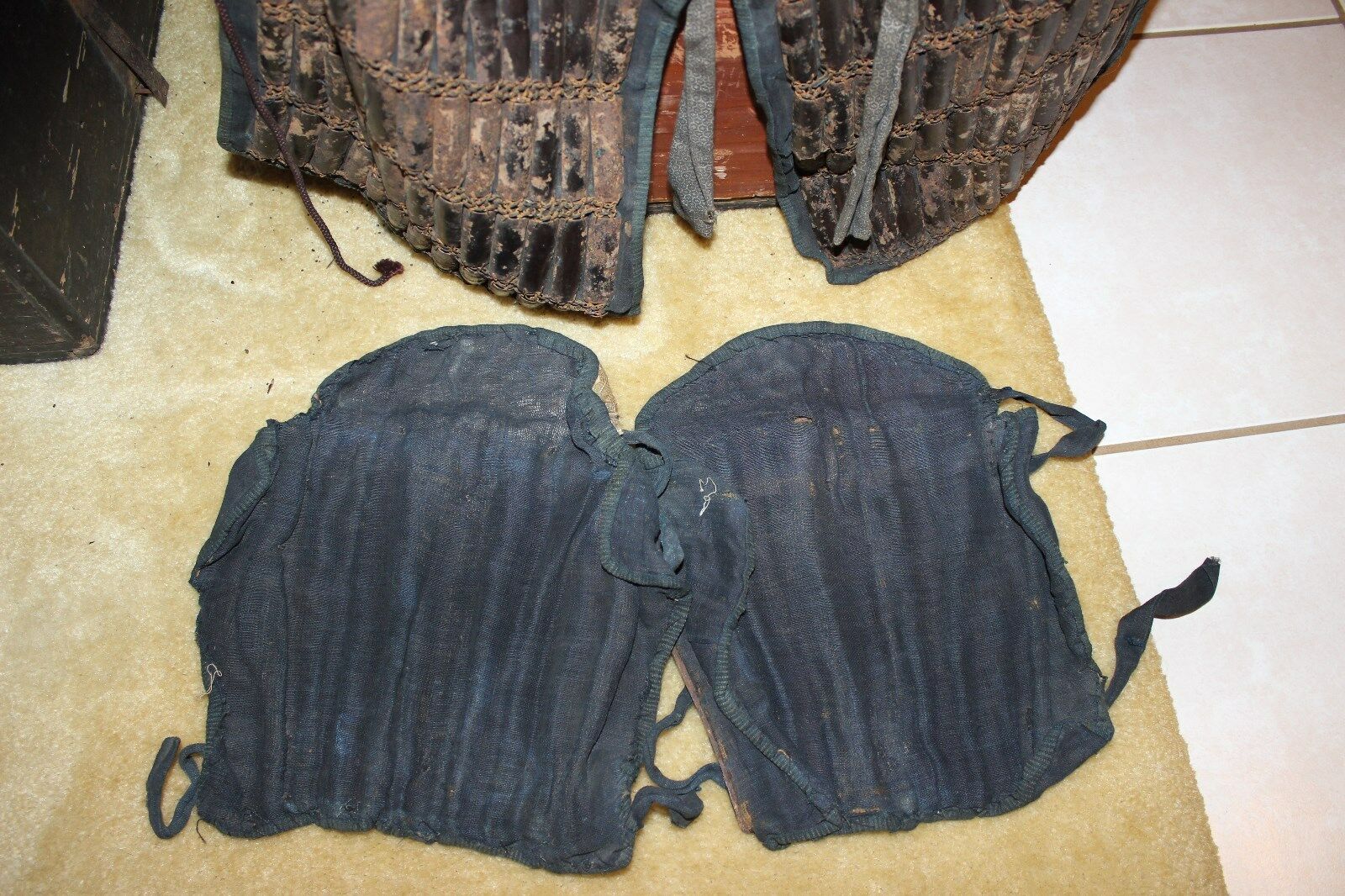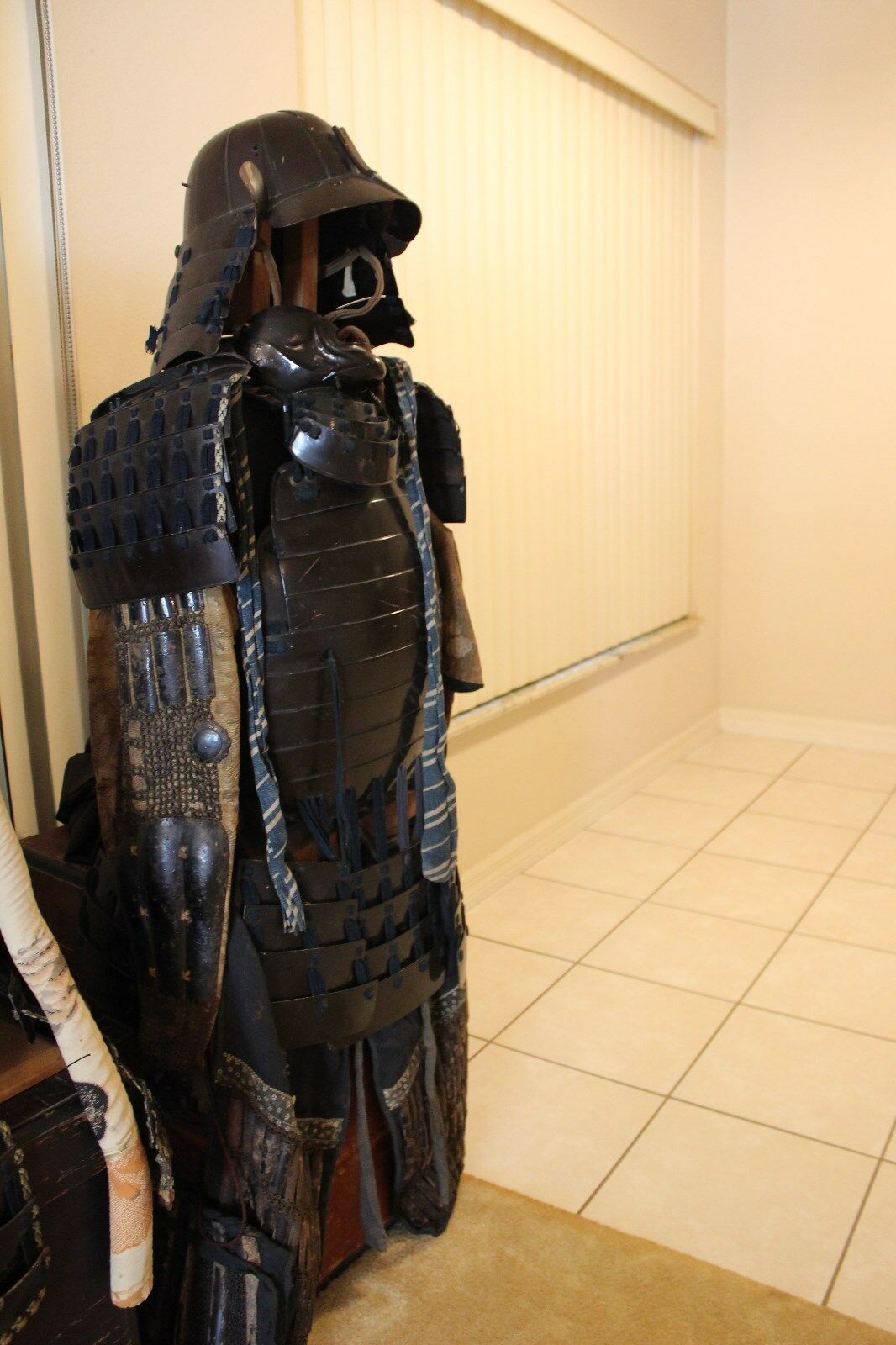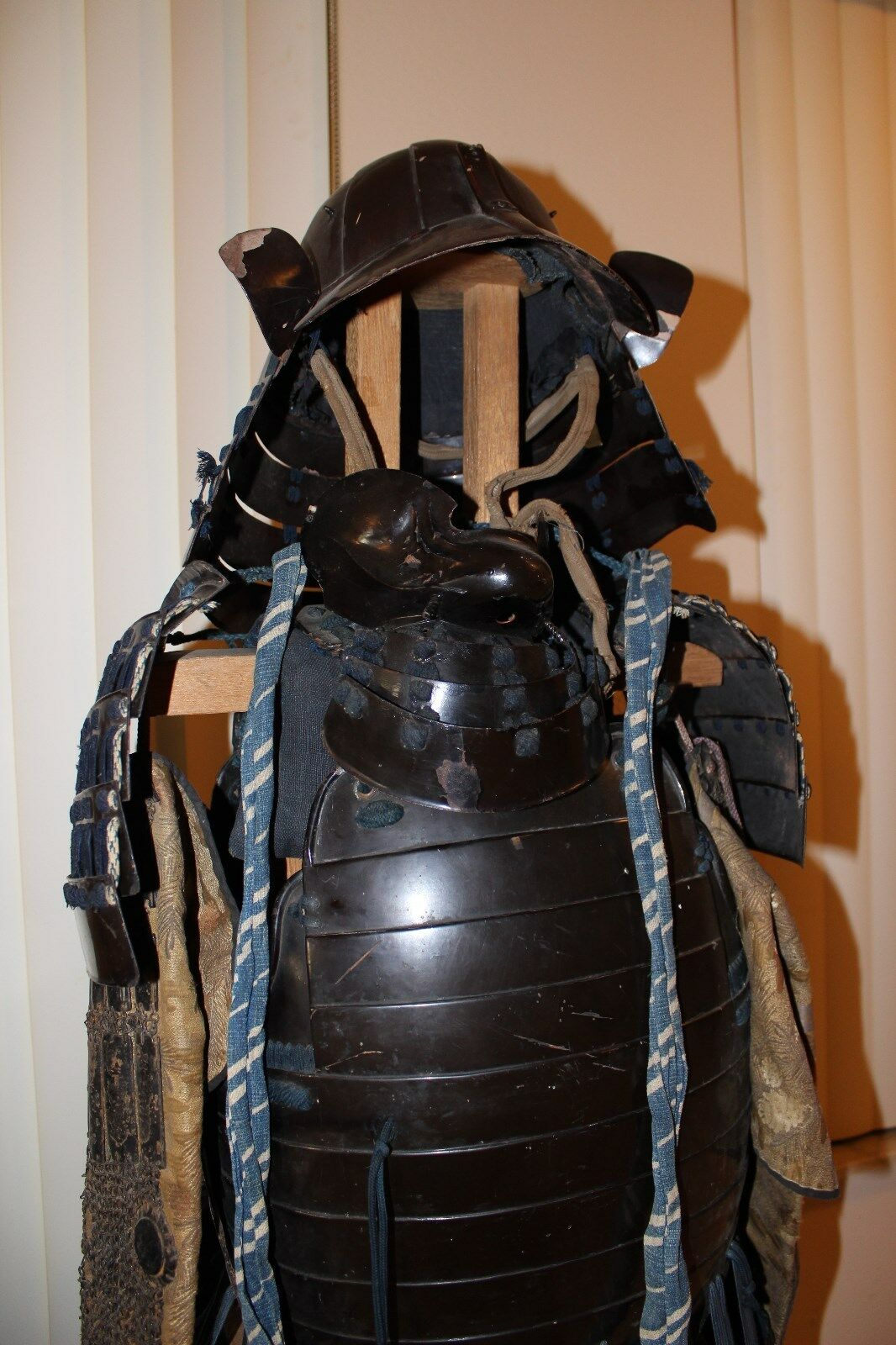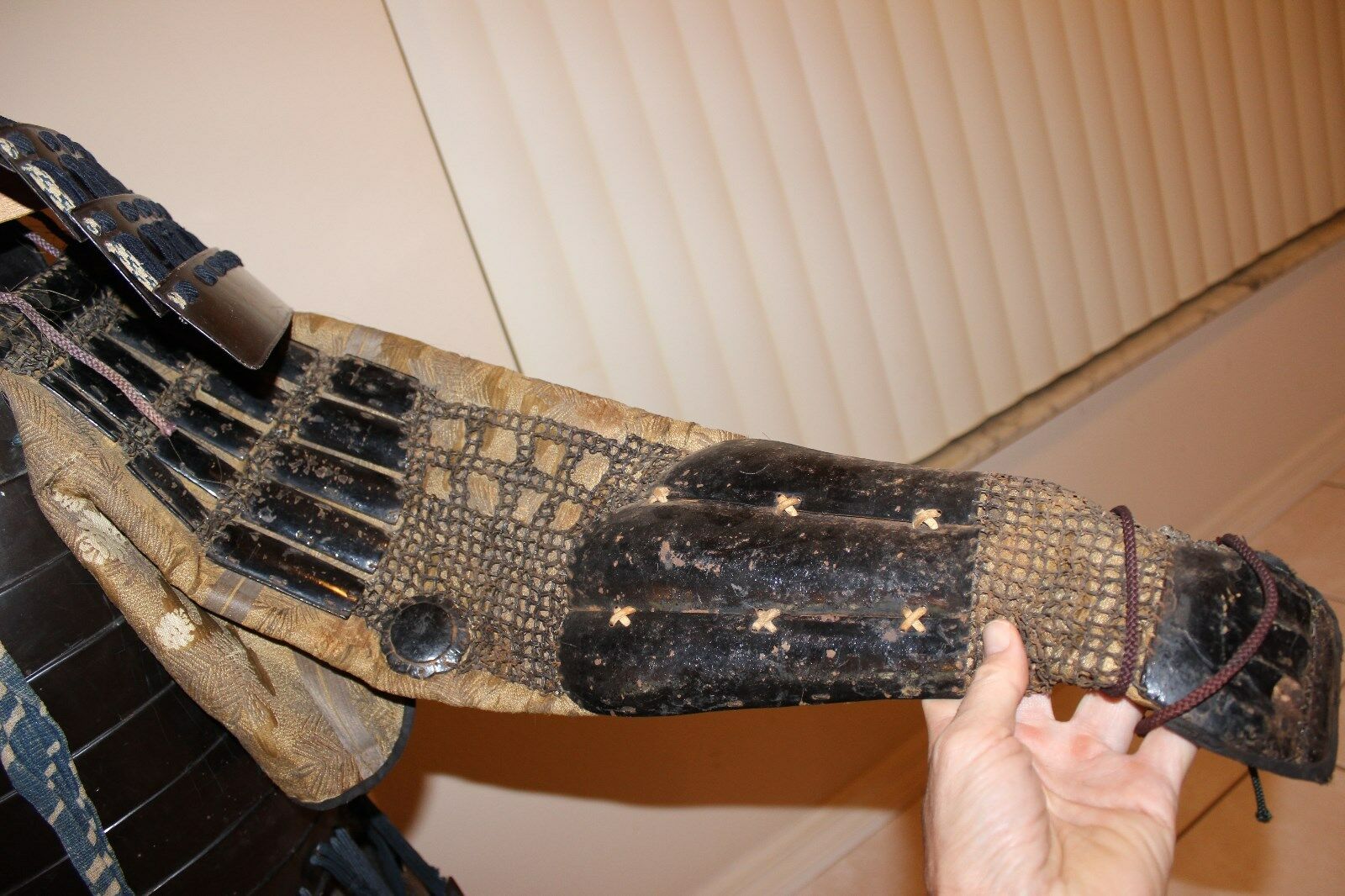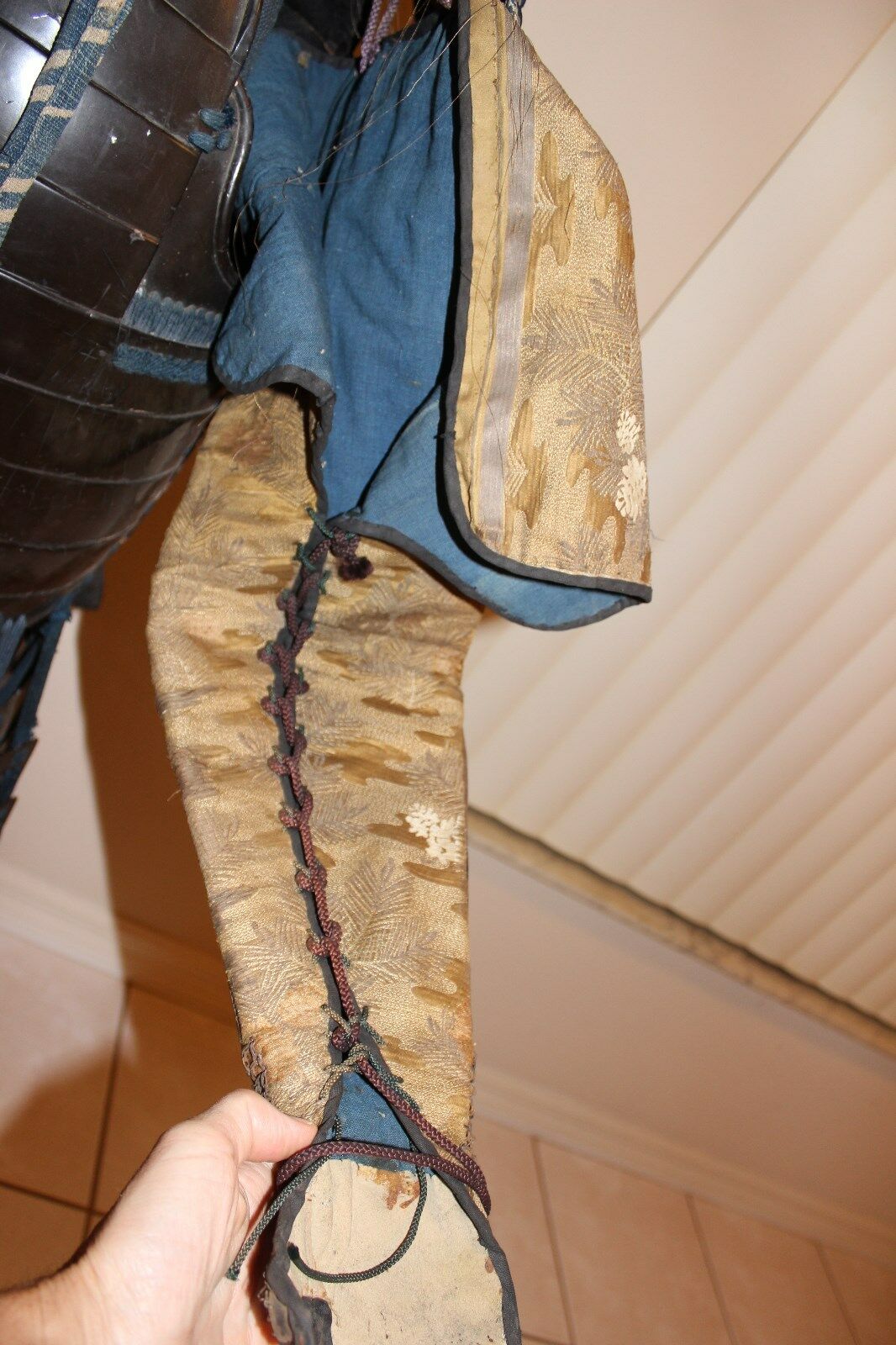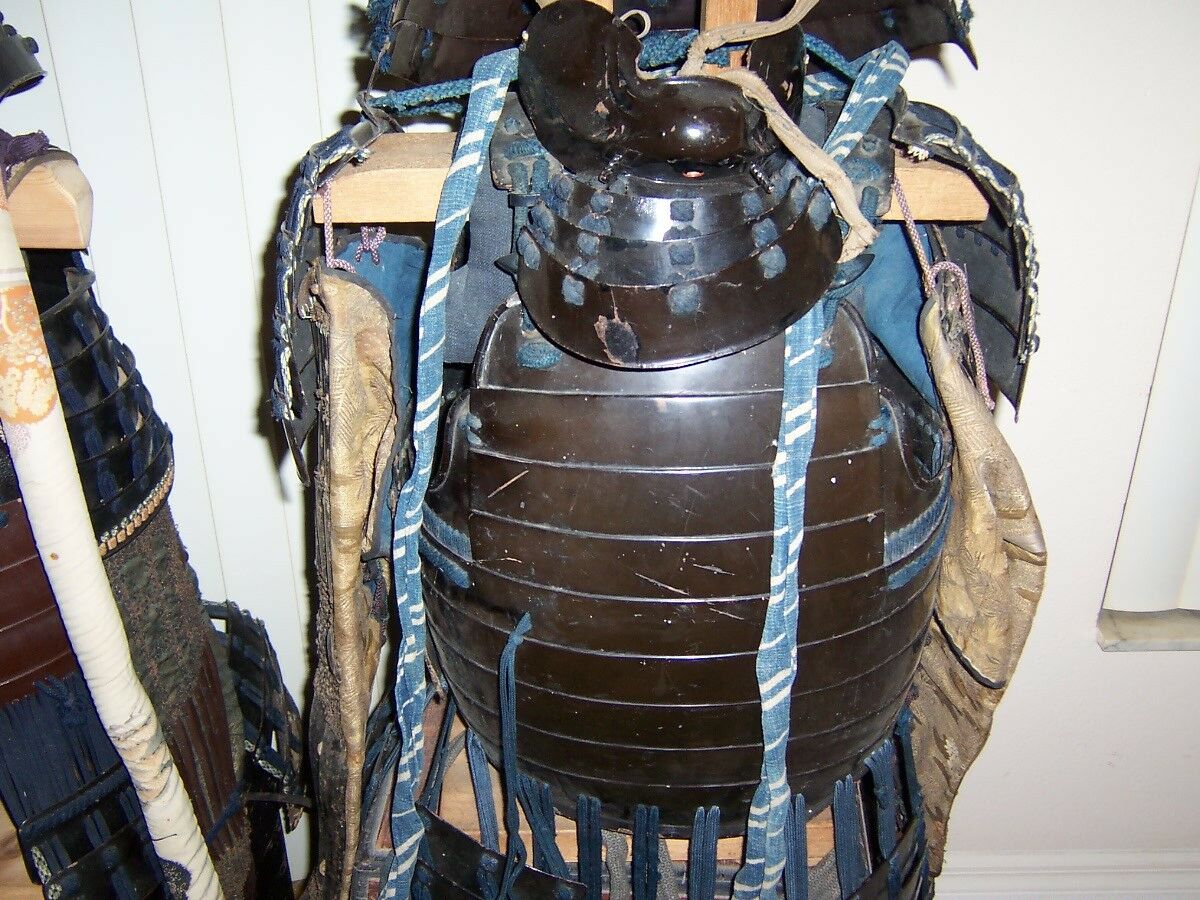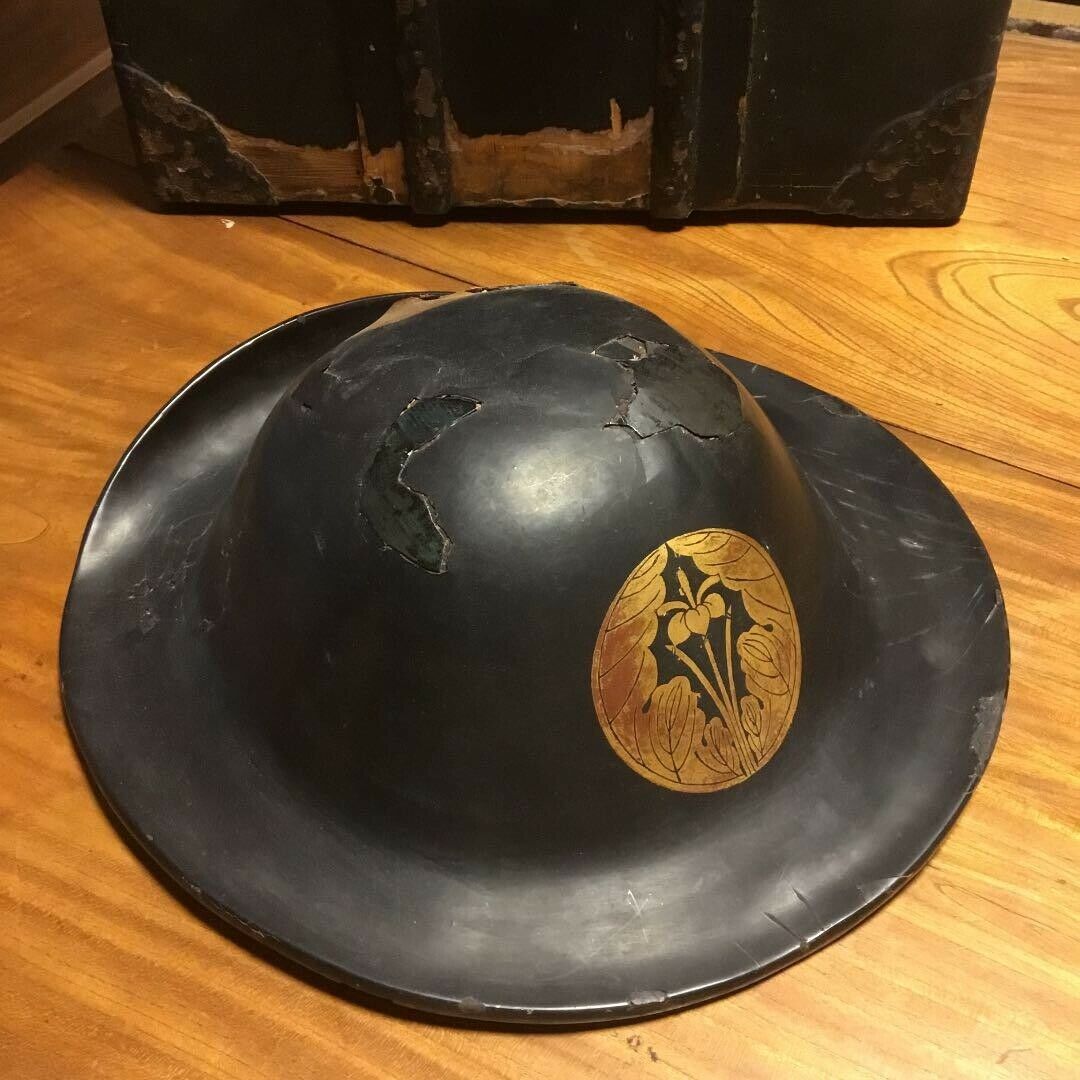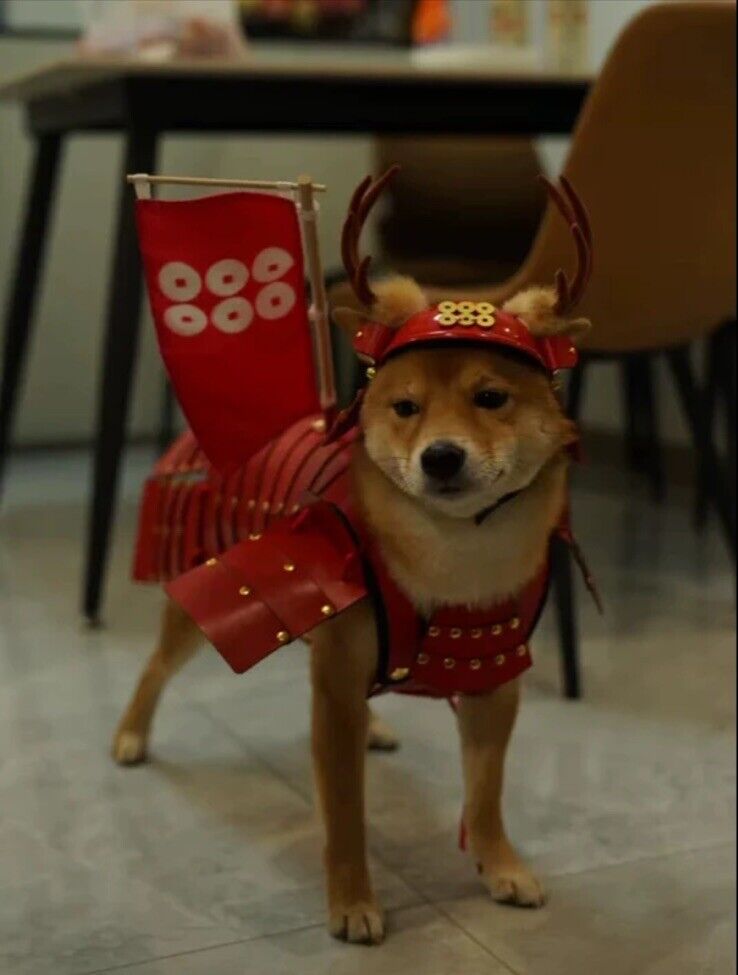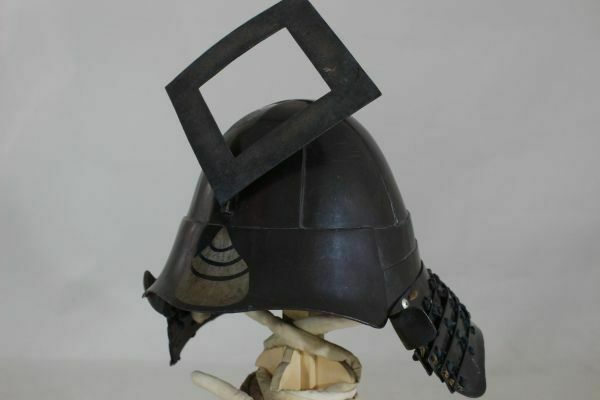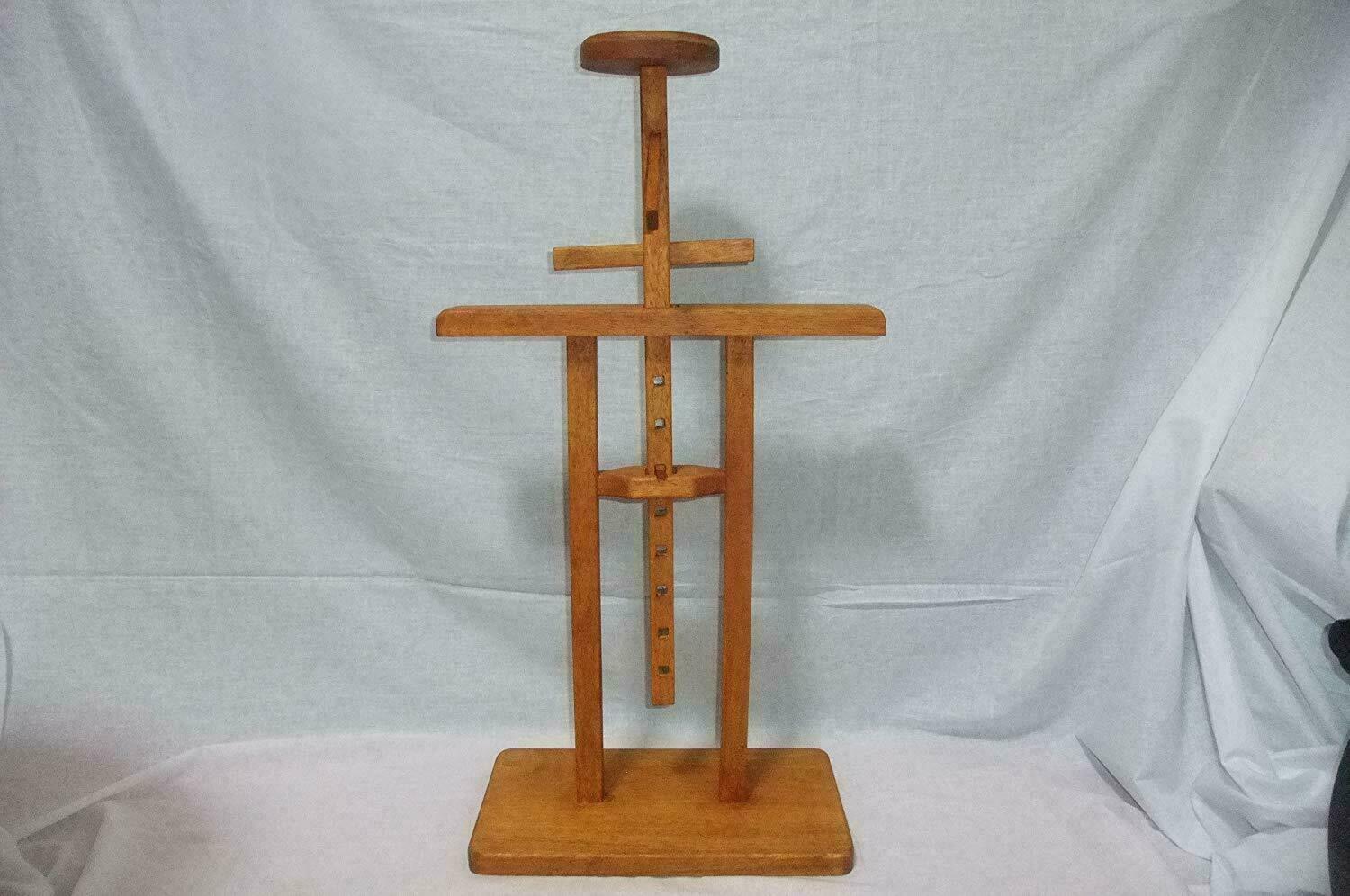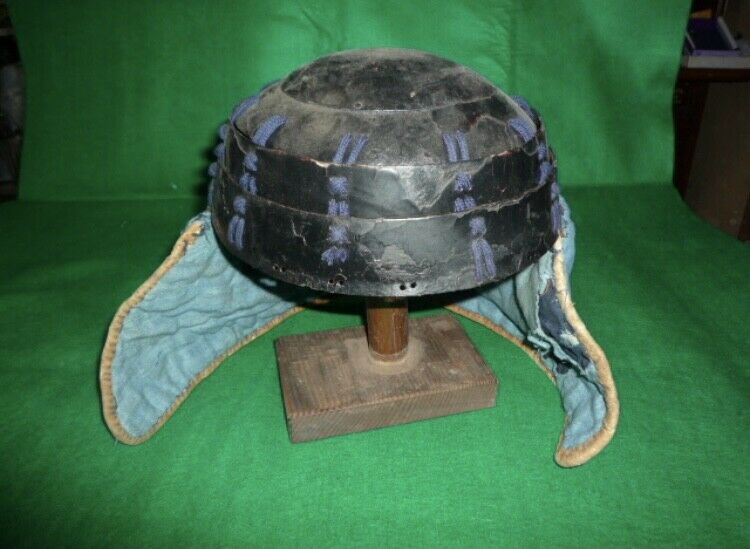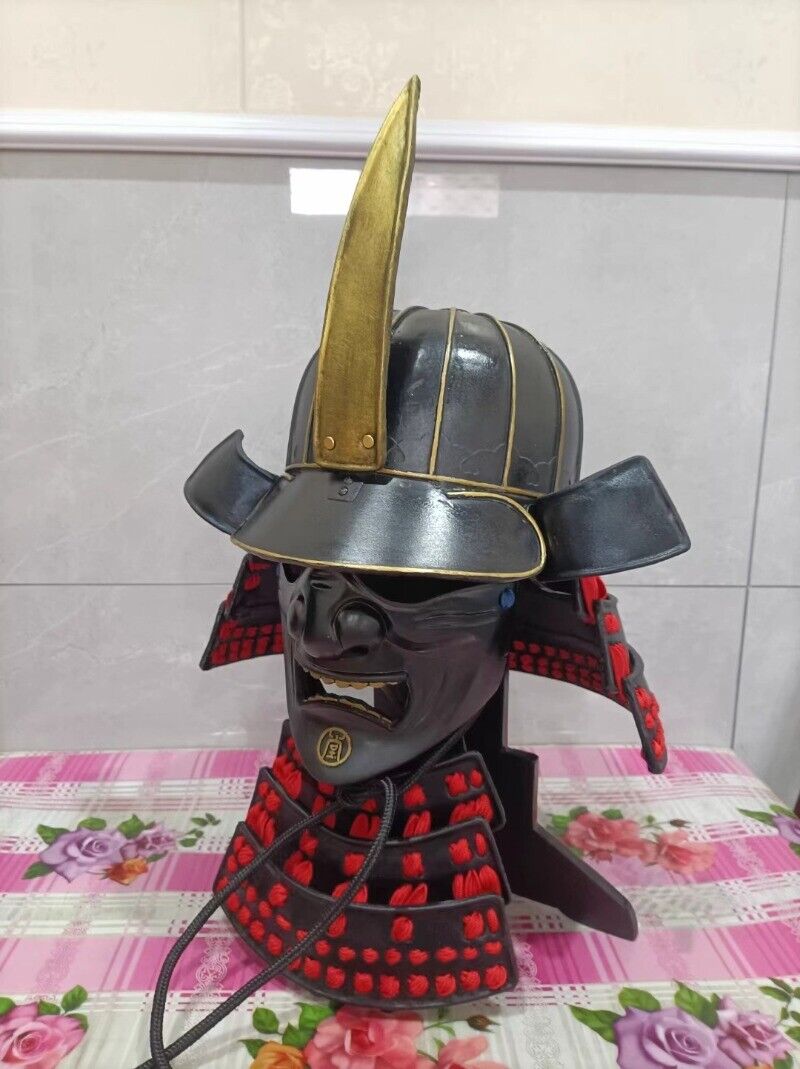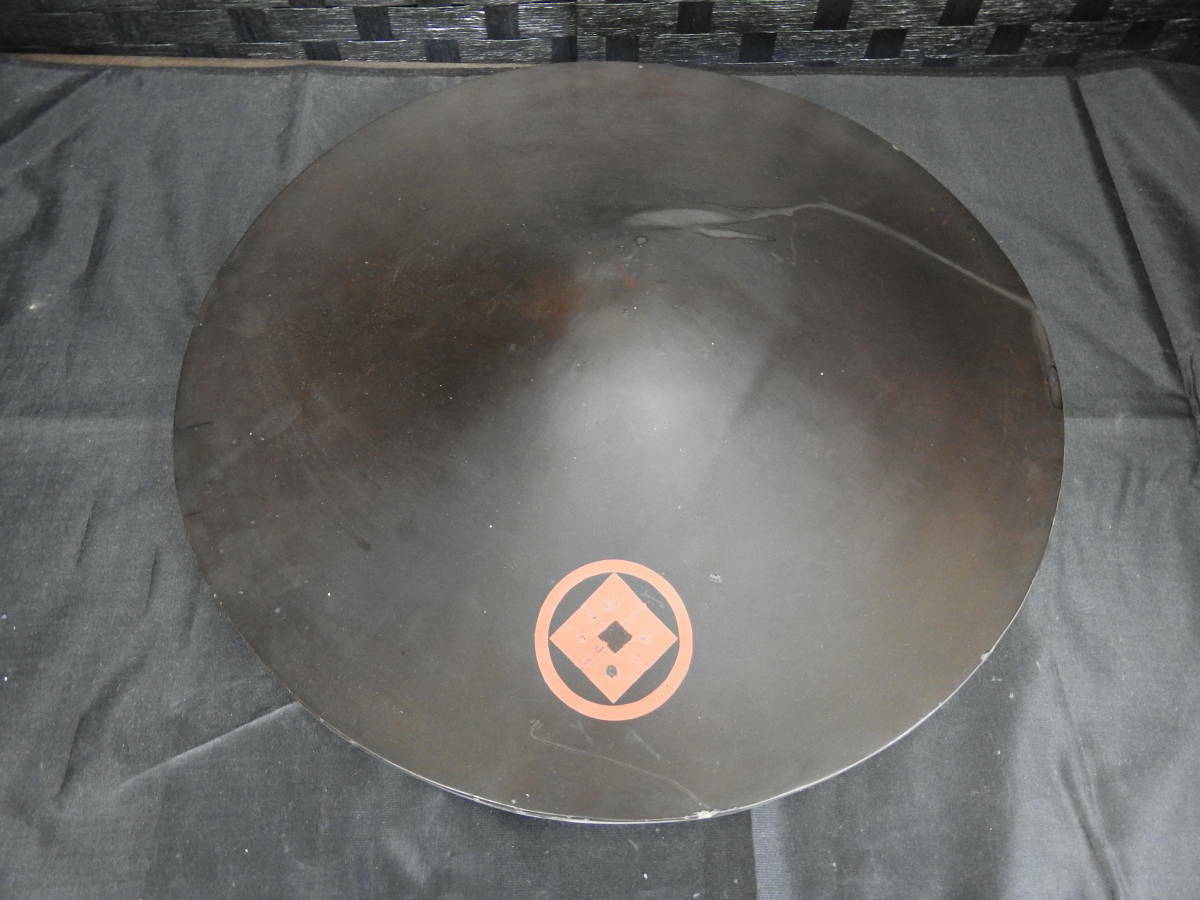-40%
Japanese Samurai large size full armor #1: Tatami Gusoko, Edo period 1600-1900
$ 5280
- Description
- Size Guide
Description
Japanese Samurai large size full armor #1: Tatami Gusoko, ca 1600-1900Metal iron plates (which stick to the magnet), attached to the cloth by lacquer and silk laces.
Total number of parts.
1.
Dou or D┼Ź
ŌĆō is worn on the chest. Height: 16 inches; Width (half circumference): 20 inches
2.
Kote
ŌĆō These were sleeves
3.
Tekko
ŌĆō Tekko are gloves of the armor.
4.
Haidate
ŌĆō Haidate was used to protect the thighs specifically.
5.
Kusazuri
ŌĆō The kusazuri was also constructed from iron plates or leather plates. It is used to protect the lower body. It usually hangs from the dou.
6.
Sode
ŌĆō These are the shoulder plates which are rectangular in shape.
7.
Shikoro
ŌĆō┬ĀThe shikoro is a set of layered steel or leather straps that combined are the neck guard.
8.
Kabuto
ŌĆō┬ĀKabuto is nothing but the helmet.
9.
Wakidate
ŌĆō┬ĀThese were the buffalo horns which were attached to the kabuto.
10.
Menpo
ŌĆō This was the face plate which was attached to the kabuto. It was made from an iron plate. It had slits for eyes, nose, and mouth. The rest of the face of the samurai warrior was always covered with Menpo.
Total weight: approximately 30 lb.
Wood stand, which can be used as a shipping box, approximate weight 5 lb.
Total shipping weight: approximately 30 pounds + 5 pounds for shipping box
Provenance: private collection of arms in Florida.
Tatami Gusoku
The┬Āprevious┬Ātwo armor types, though were effective in their time,┬Āthey did have some setbacks; one of which was the weight and lack of flexibility. Since these armor types┬Āwere stiff and the lacked the ability to fold and be packed away for transportation a need┬Āfor a ŌĆśfoldableŌĆÖ armor was developed.
During the feudal era, this need of portability was fulfilled by the Tatami Gusoku which was foldable and hence could be carried around easily when not in use. The tatami gusoku was worn by all┬Āclasses of samurai ranging from upper class to lower class.
Pros:
Portable
Lightweight
Full body armor
Cons:
Lesser protection┬Āthan the┬ĀTameshi Gusoku
Major parts of the armor:
Dou or D┼Ź
ŌĆō Dou is the armor part which is worn on the chest. It was constructed from iron plates or sometimes leather plates. The dou also sometimes consisted of medals and pendants. The size of the dou would often vary according to the individual who would be wearing it.
Kote
ŌĆō These were sleeves which extended from the shoulder all the way to the wrists. Kote was created by putting a cover of clothing over the iron plates of various sizes. The exact size was dependent on the samurai warrior wearing it.
Tekko
ŌĆō Tekko are gloves of the armor. They were made according to the size of the hands of the warrior. The construction was done with the help of small iron plates. The plates were joined together in such a way that it enabled proper hand movement including knuckle movements.
Haidate
ŌĆō Haidate was used to protect the thighs specifically. Haidate was, however, made with very small iron or leather plates so that the warrior was able to change the posture at a short notice. These plates were connected together with the help of chains and thereafter sewn with a cloth.
Suneate
ŌĆō These were the shin guards and consisted of small plates held together by chains and thereafter sewn to cloth and were specifically used to protect the calf.
Kusazuri
ŌĆō The kusazuri was also constructed from iron plates or leather plates. It is used to protect the lower body. It usually hangs from the dou.
Sode
ŌĆō These are the shoulder plates which are rectangular in shape. They were made from the same materials, that is either leather plates or iron plates or sometimes both.
Shikoro
ŌĆō┬ĀThe shikoro is a set of layered steel or leather straps that combined are the neck guard. This attaches to the kabuto and is intended to protect the samurai from any objects aimed at the nape of their neck.
Kabuto
ŌĆō┬ĀKabuto is nothing but the helmet. Even though it was made from same materials namely, leather plates or iron plates but the number of plates used were much higher, sometimes going up to 100. These plates were held together using rivets. Another part which was attached to the Kabuto is the shikoro which was used to protect the neck. It consisted of curved strips of iron or leather.
Wakidate
ŌĆō┬ĀThese were the buffalo horns which were attached to the kabuto.
Menpo
ŌĆō This was the face plate which was attached to the kabuto. It was made from an iron plate. It had slits for eyes, nose, and mouth. The rest of the face of the samurai warrior was always covered with Menpo.
